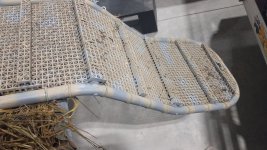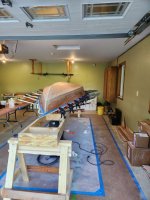Not finalized, and won't until I get the boat flipped and decked, but I have a couple rough designs in mind to experiment with once the boat is more complete. One is somewhat based on the kicker motor attachment Tod made for his, that locks into the stern eye with a chock. Easily removable.
Those tabs you are going to use sure seem like they have potential as an attachment point as well. Does your pup not like to come in over the gunnel?




